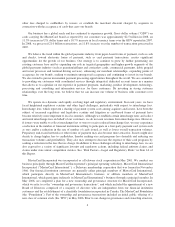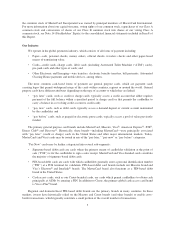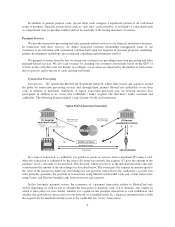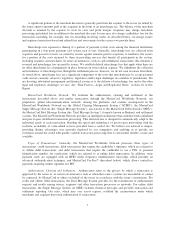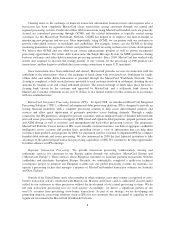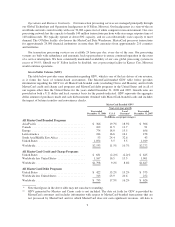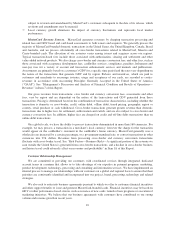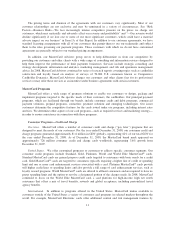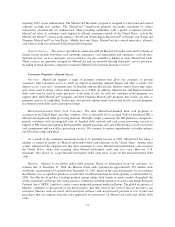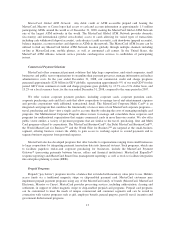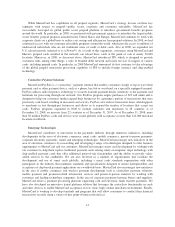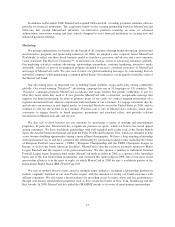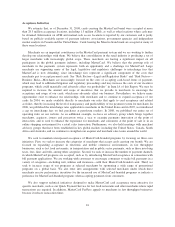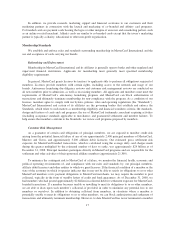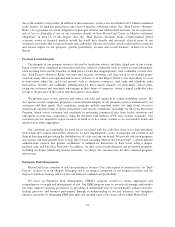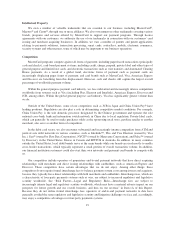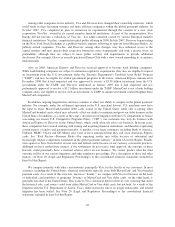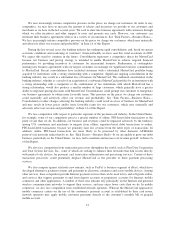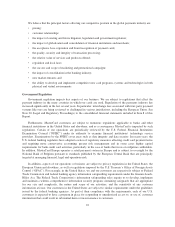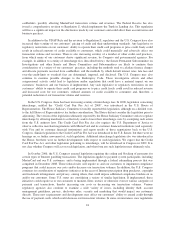MasterCard 2008 Annual Report Download - page 24
Download and view the complete annual report
Please find page 24 of the 2008 MasterCard annual report below. You can navigate through the pages in the report by either clicking on the pages listed below, or by using the keyword search tool below to find specific information within the annual report.While MasterCard has capabilities in all prepaid segments, MasterCard’s strategy focuses on three key
segments with respect to prepaid—public sector, corporate and consumer reloadable. MasterCard has
successfully leveraged its global public sector prepaid platform to introduce government benefits programs
around the world. In particular, in 2008, we partnered with government agencies to introduce the largest public
sector benefits prepaid program awarded in the United States and Europe. MasterCard continues to work with
corporate clients on a global basis to realize cost savings and efficiencies from prepaid solutions. In 2008, we had
continued success with our consumer reloadable programs around the world, which provide access to millions of
underserved individuals who are not traditional users of credit or debit cards. Also in 2008, we expanded our
U.S. reload network (referred to as rePower®). As a result of this expansion, consumers using MasterCard and
Maestro prepaid cards enrolled in the network can reload these cards at the point of sale at nearly 50,000
locations. Moreover, in 2008, as discussed above, MasterCard introduced IPS, which is designed to provide
customers with, among other things, a suite of branded debit network and issuer services in support of various
cards, including prepaid cards. In particular, in 2008 MasterCard announced its first customer to take advantage
of the global prepaid transaction processing capability of IPS to include foreign currency and chip-enabled
technology.
Contactless Payment Solutions
MasterCard PayPass is a “contactless” payment solution that enables consumers simply to tap or wave their
payment card or other payment device, such as a phone, key fob or wristband, on a specially equipped terminal.
PayPass utilizes radio frequency technology to securely transmit payment details wirelessly to the payment card
terminals for processing through our network. Our PayPass program targets purchases of $25 and under and is
designed to help our customers further expand their businesses by capturing a portion of transactions that were
previously cash-based, resulting in increased card activity. PayPass also reduces transaction times, which appeals
to merchants in fast through-put businesses and allows us to expand the number of locations that accept our
cards. PayPass programs expanded in 2008 to include customers and merchants in 28 countries as of
December 31, 2008, an increase from 22 countries as of December 31, 2007. As of December 31, 2008, more
than 50 million PayPass cards and devices were issued globally with acceptance at more than 141,000 merchant
locations worldwide.
Emerging Technologies
MasterCard contributes to innovation in the payments industry through numerous initiatives, including
developments in the areas of electronic commerce, smart cards, mobile commerce, person-to-person payments,
corporate electronic payments, transit and emerging technologies. MasterCard encourages new initiatives in the
area of electronic commerce by researching and developing a range of technologies designed to offer business
opportunities to MasterCard and our customers. MasterCard manages smart card development by working with
our customers to help them replace traditional payment cards relying solely on magnetic stripe technology with
chip-enabled payment cards that offer additional point-of-sale functionality and the ability to provide value-
added services to the cardholder. We are also involved in a number of organizations that facilitate the
development and use of smart cards globally, including a smart cards standards organization with other
participants in the industry that maintains standards and specifications designed to ensure interoperability and
acceptance of chip-based payment applications on a worldwide basis. MasterCard also encourages new initiatives
in the area of mobile commerce and wireless payment development such as contactless payment solutions,
mobile payment and payment-related information services and person-to-person transfers by working with
customers and leading technology companies. In the area of corporate payments between buyers and suppliers,
MasterCard offers a payment processing platform supporting card and electronic funds transfer payments. We
have also developed an innovative transit platform solution that leverages the contactless functionality in cards
and other devices to enable MasterCard acceptance in low value, high volume merchant environments. Finally,
MasterCard is working to develop standards and programs that will allow consumers to conduct their financial
transactions securely using a variety of new point-of-interaction devices.
14


